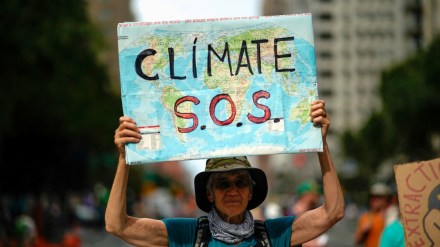By Akhilesh Tilotia
The green transition is here to stay. As concerns on climate change increase and green technologies and products improve their economic viability, it is sparking growing adoption. Renewable energy (RE), including rooftop solar and electric vehicles (EVs), is gaining market share from its fossil counterparts. Climate change is increasing the requirement for cooling, especially in India.
Three trends stand out: (a) investment is being made at a household level (for a rooftop panel, EV, or an air conditioning device); (b) such investment is, by definition, upfront; (c) once the investment is made, the cost of operation is typically significantly lower than current costs.
Rise of household investments
As consumers transform into prosumers (producers and consumers simultaneously), households are at the forefront of making investments in green products.
The International Energy Agency (IEA), in its World Energy Investment 2024 report, noted, “The share of total energy investments made or decided by private households (if not necessarily financed by them directly) has doubled from 9% in 2015 to 18% today, thanks to the combined growth in rooftop solar installations, investments in buildings efficiency and electric vehicle purchases. For the moment, these investments are mainly made by wealthier households — and well-designed policies are essential to making clean energy technologies more accessible to all.”
It is reasonable to expect that this trend of investing “behind the meter” (as it is called in the power industry) should gain strength. Customers are procuring various devices that are being used in the power sector (solar panels, smart and net metering, battery storage, etc.). This is true for transport and building efficiency too. As the IEA report notes, wealthy customers are currently making these investments; public policy and finance are being used to support low-income households.
Importance of capex over opex
Another IEA report titled “Strategies for Affordable and Fair Clean Energy Transitions” noted that “…total end-use expenditure on energy…amounted to USD 8 trillion in 2023, reflecting the total energy delivery costs paid for by households and industrial consumers (USD 7 trillion in 2023) plus additional taxes, net of fossil fuel and clean energy subsidies (USD 1.1 trillion). In the STEPS (Stated Policies Scenario), end-use energy expenditure rises to USD 10 trillion in 2035. There is a modest increase in taxes raised from prices on CO2 and a decrease in fossil fuel subsidies, but the main driver of increased capital expenditure is additional investment to meet growing energy demand.” [emphasis added]
While the overall expenditure on energy as a proportion of GDP does not materially change, the relative nature of spending does. Currently, just slightly less than half of the $8 trillion is for capital recovery and financing costs; this proportion rises to almost two-thirds, especially under the Net Zero Emissions by 2050 scenario. The faster the world wants to achieve net zero, the higher is the proportion of the capital investment.
Currently, power or fuel costs are dependent on the cost dynamics of the underlying commodity (coal, crude oil, etc.). Over time, the cost for the final consumer will be driven by the cost of capital in setting up the ecosystems of renewable power supply or EVs. Once capex on setting up these systems is sorted, the marginal operating cost, especially in a competitive market, can tend towards a very low number, if not zero. We see this trend in RE, and increasingly in EVs.
Making the capital recovery easy, certain, and viable will be a key determinant of capital flow for green transition.
Whither greenium?
Even as investment takes centre stage in the green transition, markets have consistently guided that there is no material, sustained green premium for financing such investments. We have explored this earlier in these pages (bit.ly/3X3aK4i). Recent green bond issuances by the government of India (which were either cancelled or partially subscribed at the expected lower yield) highlighted that it is challenging, even for sovereign issuers, to get any material greenium.
There is a thesis that in a world roiled by climate change, eventual returns may turn out to be low, driven by lower economic growth or more disruptive climate events. This posits that long-term asset owners and managers should take this eventuality into account and be prepared to accept lower current returns on their investments. However, it does not meet the test of the market currently.
This should not be surprising. We know that asset owners (sovereign wealth funds, pension funds, endowment funds, etc.) and managers of capital (fund managers of private equity, investment trusts, debt funds, etc.) are all bound by their respective fiduciary duties to get appropriate risk-adjusted return on their investments, which are tracked against current benchmarks and returns. This makes it almost impossible for them to expect lower returns from green investments.
Implications for green investments
In sum, the three trends indicate that households (including small business owners and operators) are expected to make larger green investments requiring the commitment of upfront capital that will anticipate to meet its return expectations.
Opportunities in green investments will widen from financing large renewable power farms and electric mobility original equipment manufacturers to consumer goods in these ecosystems. While public policy will have a role in making green choices more affordable, the best performing industries will be those which can reach economic viability via a mix of technological, scaling, and business process breakthroughs.
The business model will change from charging customers a margin on the cost of input to charging for the cost of capital deployed. This will create opportunities for asset aggregation firms that can offer flexible, long-term lease options to customers. Such asset platforms can facilitate the transition by bringing in aggregation benefits for households as well as businesses large and small.
As the green transition becomes more mainstream, these trends will create a new set of investment opportunities.
The author is Co-chair, Climate and Sustainability Council, IVCA
Views are personal
